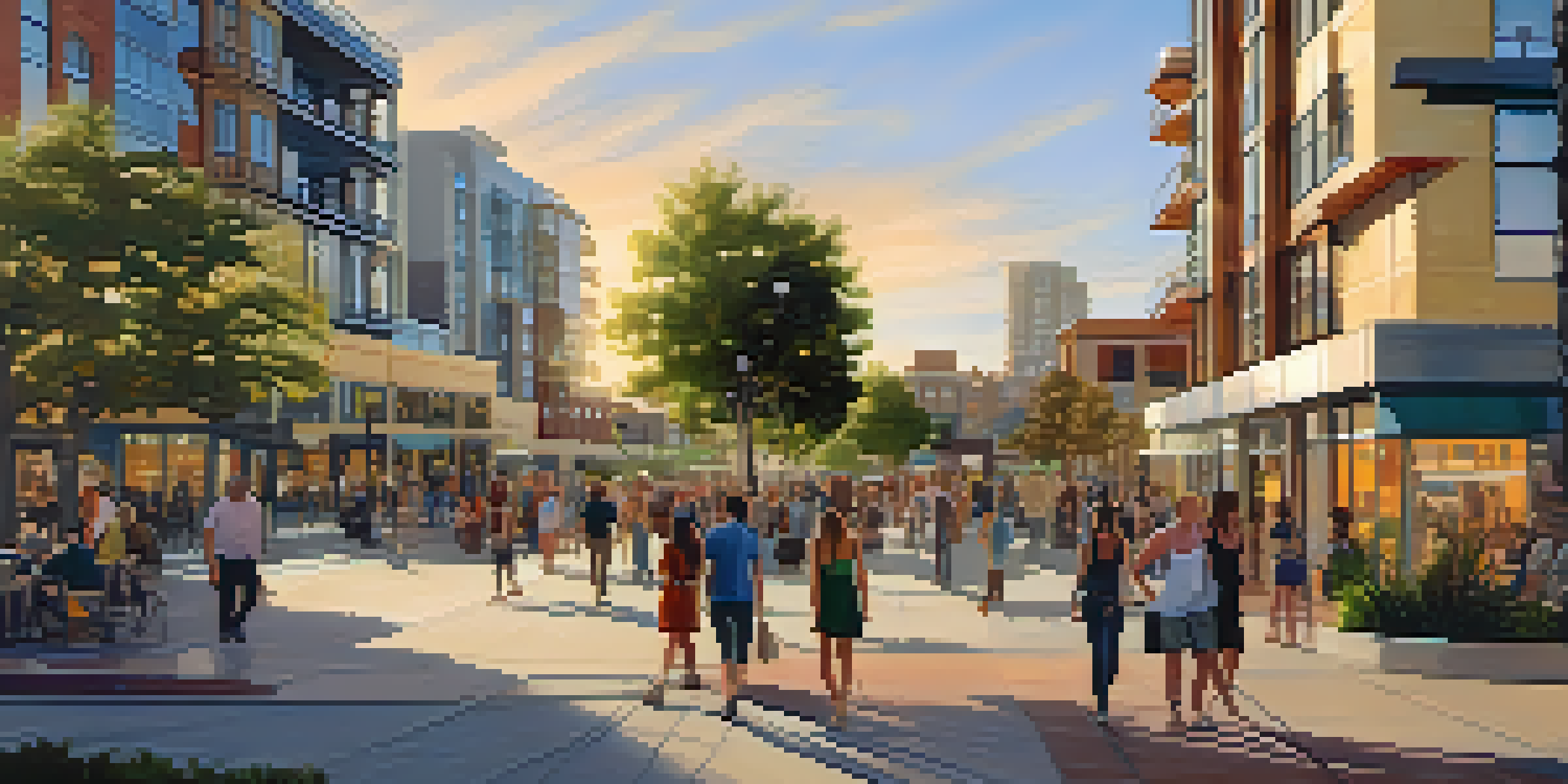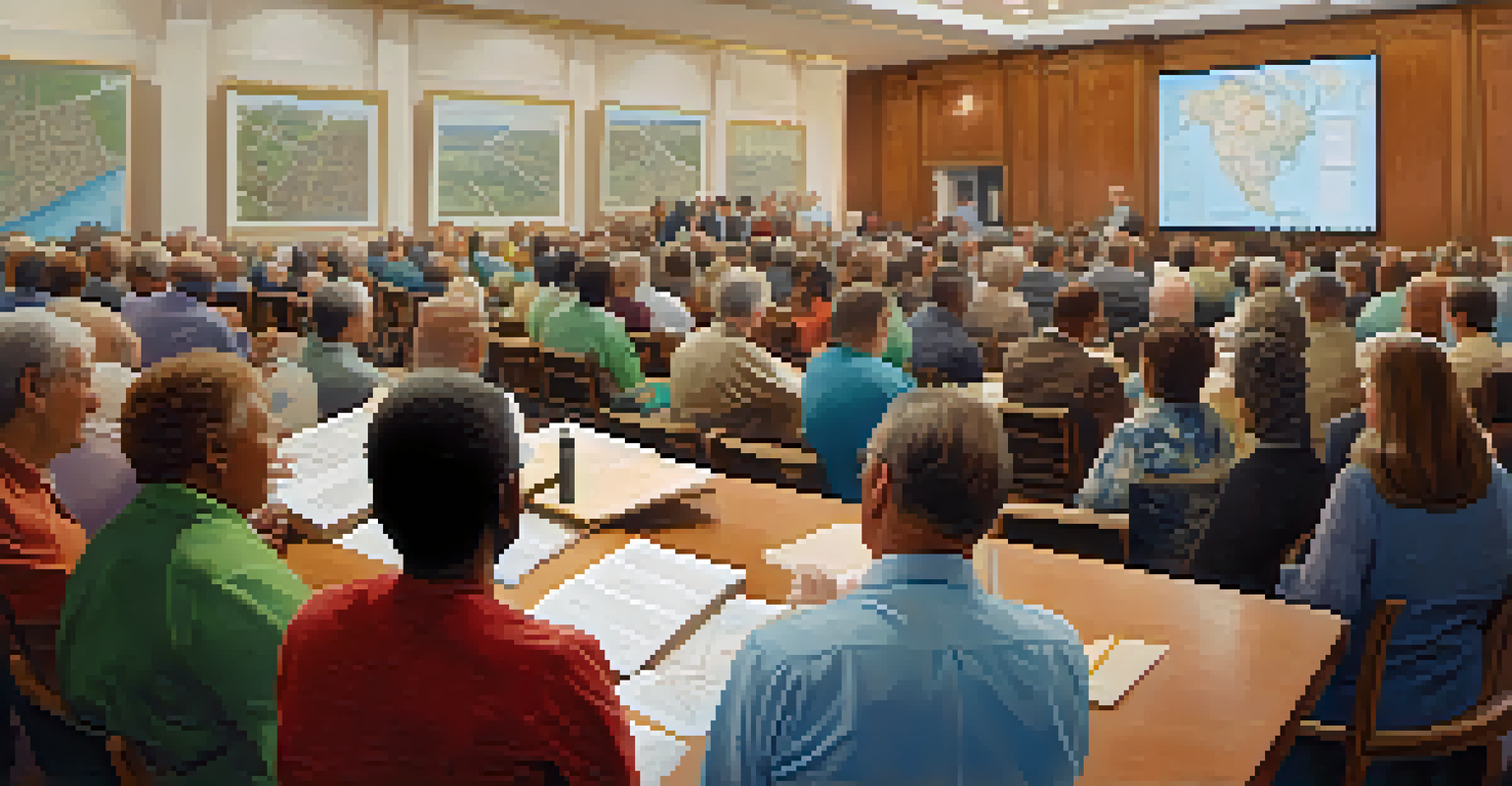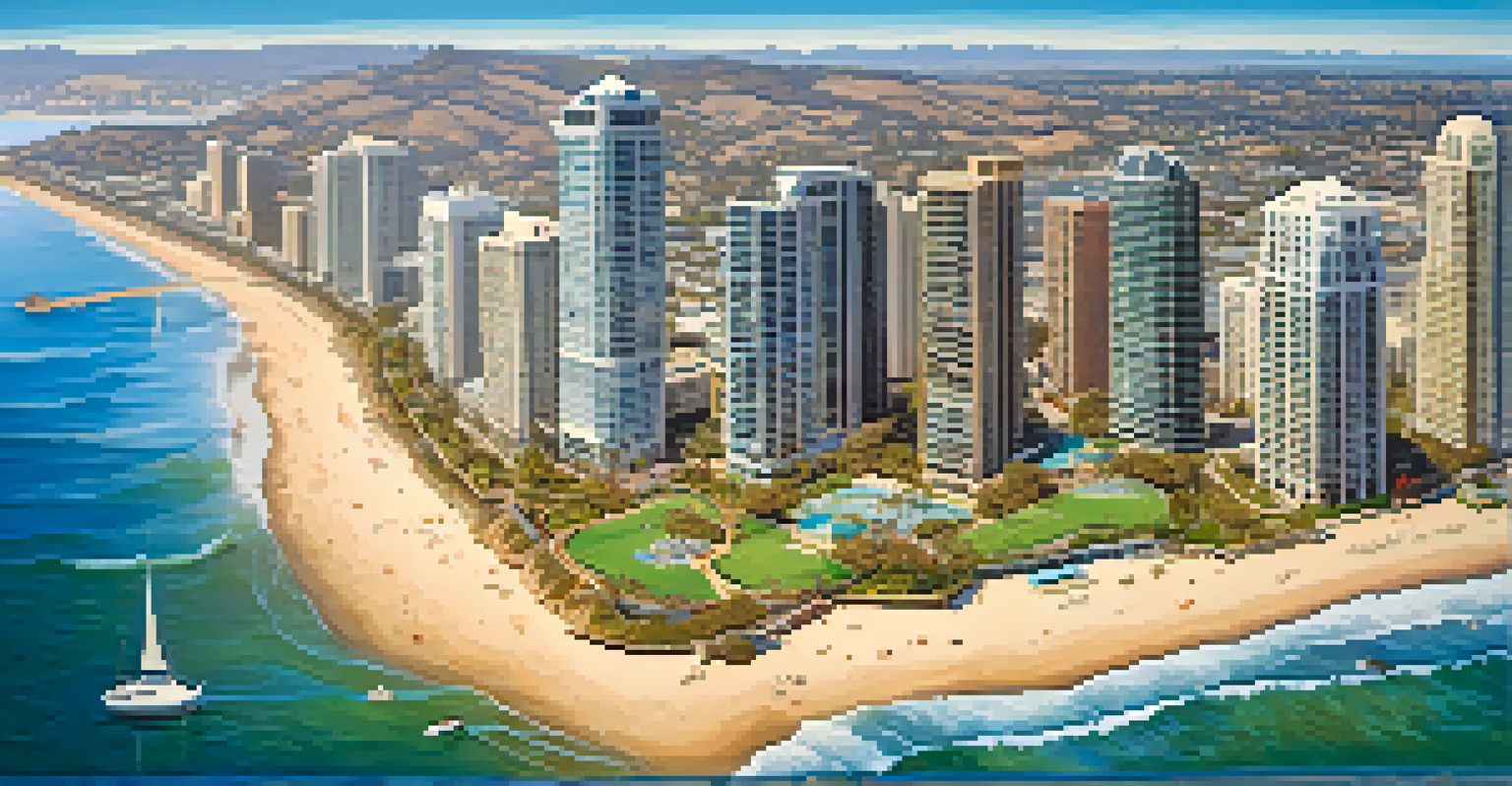Zoning Laws: Early Regulations in San Diego's Urban Planning

Understanding Zoning Laws: A Brief Overview
Zoning laws are regulations that dictate how land can be used in different areas. They help ensure that residential, commercial, and industrial spaces coexist harmoniously. By designating specific zones, cities can control development, protect property values, and maintain community aesthetics.
Zoning is a way of implementing a community's vision for how land should be used, and a way to manage growth and change in a positive way.
In San Diego, the application of zoning laws has been crucial for urban planning. These regulations originated in the early 20th century, reflecting the city's growth and the need for organized development. As a result, zoning laws have helped shape San Diego into the vibrant city it is today.
Understanding the basics of zoning laws is essential for grasping their historical impact on urban planning. By establishing guidelines for land use, these laws not only influence property development but also affect the community's character and livability.
The Birth of Zoning Laws in San Diego
San Diego's journey with zoning laws began in the early 1900s as the city expanded rapidly. The first comprehensive zoning ordinance was adopted in 1923, aimed at addressing the challenges posed by urban growth. This marked a significant shift in how the city approached land use and urban planning.

The introduction of zoning regulations aimed to balance the needs of a growing population with the preservation of residential areas. It sought to separate incompatible land uses, such as factories near homes, ensuring a better quality of life for residents. This proactive approach laid the groundwork for future urban development.
Zoning Laws Shape Urban Planning
Zoning laws in San Diego play a crucial role in organizing land use, balancing residential and commercial needs for community development.
By establishing clear zoning categories, San Diego was able to plan its expansion effectively. This helped the city avoid the chaotic development seen in other urban areas, allowing it to maintain its unique character and charm.
Key Components of San Diego's Zoning Regulations
San Diego's zoning regulations include several key components that guide land use. These components define residential, commercial, and industrial zones, each with specific rules governing development. For example, residential zones typically restrict the height and density of buildings to maintain neighborhood character.
The best way to predict the future is to create it.
Another important aspect is the establishment of overlay zones that address special concerns, such as historic preservation or environmental protection. These overlays allow for tailored regulations that cater to unique community needs, ensuring that development aligns with local values.
Overall, these components work together to create a structured framework for urban planning. By clearly outlining what can be built where, zoning regulations help minimize conflicts and enhance the overall quality of life in San Diego.
The Role of the Community in Zoning Decisions
Community involvement has always played a vital role in shaping San Diego's zoning laws. Public hearings and community meetings allow residents to voice their opinions and concerns about proposed developments. This participatory approach ensures that zoning regulations reflect the needs and desires of the local population.
Feedback from the community often leads to adjustments in zoning laws to better serve residents. For instance, if a proposed commercial development is met with resistance from nearby homeowners, city planners may reconsider the project's location or scale. This dialogue fosters a sense of ownership and accountability among residents.
Community Input Drives Zoning Changes
Public involvement in zoning decisions ensures that regulations reflect the desires and needs of San Diego residents.
Ultimately, community input enhances the zoning process, making it more inclusive and responsive. By prioritizing the voices of those who live and work in San Diego, zoning laws can evolve to meet the changing dynamics of the city.
Challenges in San Diego's Zoning History
Though zoning laws have provided structure to San Diego's urban planning, they have not been without challenges. One significant issue has been the ongoing debate over housing affordability. As the city has grown, so too have concerns about the availability of affordable housing options, often leading to calls for zoning reforms.
Another challenge has been balancing development with environmental conservation. San Diego's unique coastal and desert ecosystems require careful consideration in zoning decisions. Conflicts can arise when developers seek to build in sensitive areas, prompting discussions about sustainability and responsible growth.
These challenges underscore the need for ongoing dialogue and adaptation in zoning regulations. As San Diego continues to evolve, it is essential to address these issues thoughtfully, ensuring a livable and sustainable future for all residents.
Modern Zoning Laws and Their Evolution
Today, San Diego's zoning laws continue to evolve in response to changing community needs and urban dynamics. Planners are increasingly incorporating mixed-use developments, which combine residential, commercial, and recreational spaces into one area. This shift aims to create vibrant neighborhoods that promote walkability and community interaction.
Additionally, there is a growing focus on sustainability within zoning regulations. San Diego is working to integrate green building practices and preserve open spaces through updated zoning laws. This reflects a broader recognition of the importance of environmental stewardship in urban planning.
Modern Challenges in Zoning
San Diego's zoning regulations face contemporary challenges like housing affordability and environmental conservation, necessitating ongoing adaptations.
As the city looks to the future, these modern zoning practices will play a crucial role in shaping San Diego's identity. By adapting to contemporary challenges, zoning laws can help ensure that the city remains a desirable place to live, work, and play.
The Future of Zoning in San Diego
Looking ahead, the future of zoning in San Diego is likely to be influenced by technology and data-driven decision-making. With advancements in smart city initiatives, planners can analyze urban patterns and assess the impact of proposed developments more effectively. This data-driven approach can lead to more informed zoning regulations.
Moreover, as the city grapples with climate change, zoning laws may increasingly focus on resilience and adaptation strategies. This could involve revising regulations to account for sea-level rise and other environmental factors, ensuring that San Diego is prepared for future challenges.

Ultimately, the future of zoning in San Diego will be about finding the right balance between development and preservation. By embracing innovation and community engagement, the city can navigate the complexities of urban planning while fostering a vibrant and sustainable community.